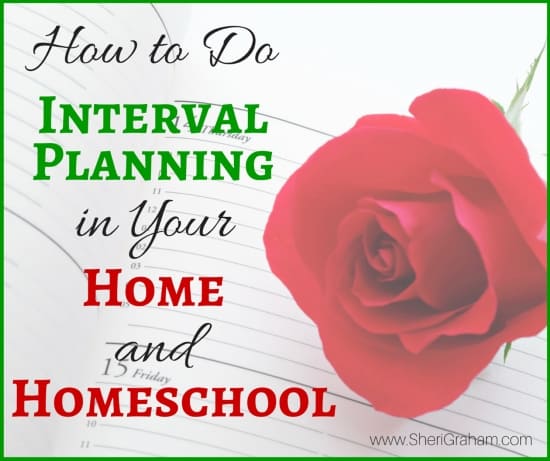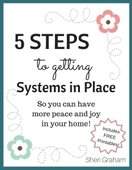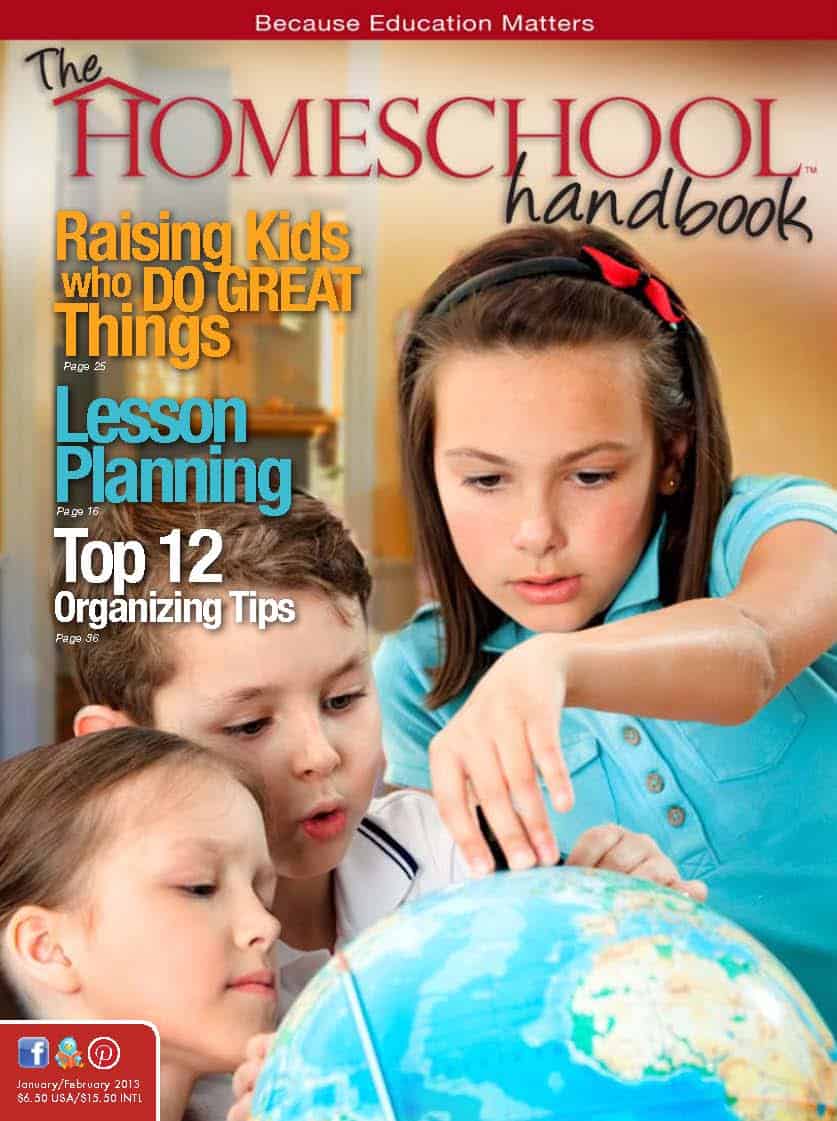How To Do Interval Planning in Your Home and Homeschool
Post may contain affiliate links. As an Amazon Associate I earn from qualifying purchases.
Ever since I first mentioned how I planned our homeschool this past year, many have asked for more details. So in this post I want to dig into what interval planning is and how you can implement it in some form into your home and homeschool!

What is Interval Planning?
Interval Planning is simply planning out your year in intervals or segments. I have always done some sort of interval planning, but not to the extent that I did this past year. Thanks to Mystie Winckler at Simplified Organization, I was able to take my planning to a whole new level! Mystie shares a ton of great information on her blog and in her courses about planning and it really helped me to step it up a bit and accomplish so much more this past year!
When you plan these shorter segments of time, it allows you to break down larger goals and tasks into manageable chunks that can be accomplished during these intervals. What was once a huge task that was too overwhelming to even begin, now becomes a series of smaller tasks to be accomplished over time. The end result is completed tasks and a happier mom!
How to Implement Interval Planning in Your Home and Homeschool
Below I will outline the steps that I take when doing Interval Planning. These can apply to you whether you homeschool or not. My hope is that this will give you a framework to begin doing some interval planning of your own! So, here is how to do Interval Planning:
Step 1. Set Your Intervals
The first step is going to be looking at your year and dividing it up into 6-8 week intervals. If you homeschool, I suggest planning 6 week intervals, with a week off in between each interval. If you don’t homeschool, your intervals can be a bit longer if you like, just make sure to plan a week break between intervals!
Some intervals may be a bit shorter or longer, depending on how holidays fall, but I like the 6 week interval the best. I find that it is just the right amount of time for us to dig in and work hard on our homeschool studies, and then everyone is ready for a break!
Once you have figured out the dates for your intervals, mark them on a calendar (digital or physical) so you can see quickly where your intervals are and when the break weeks are. I would highly suggest recording these intervals wherever you keep your main calendar. Whether you use a digital calendar (like Google Calendar or an app of some sort) or use a physical calendar, write in those intervals! It will really help for you to see those when you need to plan appointments, family vacations, etc.
Step 2: Do a Year-at-a-Glance Brain Dump
The next step is to get your calendar out and do a brain dump of everything that is going to be happening that year. This includes birthdays and anniversaries, dental or doctor appointments, vacations, house projects, work projects, etc.
Make a list of everything that you can think of that will happen that year, as well as projects that you might want to complete. Now this does not mean that you will end up doing everything on your list! This is just the first step to planning out your year and thinking about what you would like to accomplish.
Step 3: Make a List of Goals for the Year
Now that you have done a brain dump for the year, it is time to set some goals. Start by writing down on a piece of paper the main areas of your life (spiritual, health, marriage, homemaking, parenting, work, etc.) Now go back to your brain dump and start setting some goals.
Be careful not to overdo though! You are better off setting only a couple goals in each area and actually accomplishing them, than setting long lists of goals that just overwhelm and paralyze you.
Step 4: Add Important Dates, Goals, and Events to Intervals
Now that you have looked at your whole year, did a brain dump of all important dates, appointments, etc., and made a list of goals, it is time to begin adding these things to your intervals.
You can use a document on the computer (I like to use Evernote for this) or just get some paper or notebook, but create a page for each interval. Write the date of the interval at the top of the page. Now go back and write all important events and appointments under the right interval. After that, look at your goals and projects and jot those down under the interval that you think would work best to work on them.
Now you have a page for each interval, and those pages are filled with the things that will need to be done during that interval.
Step 5: Plan Your First Interval
Here is where the fun begins!
If you are homeschooling, you may want to use a physical calendar planner to write in your homeschool plans (here is what I do). For our homeschool, I look at everything that we need to cover that year, then divide it up into the number of intervals I have planned. For example, let’s say we need to get through two math workbooks for the year and there are 180 pages total. I have 6 intervals planned. That means that each interval we need to cover 30 pages. I then divide that up into weeks and enter those assignments into each of the kids’ Intentional Monthly Planners. I repeat this process for all of their table work for that interval only! I don’t plan in detail the whole year, just for the interval we are on. That way I can adjust for the next interval if needed.
I also plan out our history and science this way as well, figuring out what lessons I need to cover each interval, what books we need to read, etc. Then when I am planning for an interval, I look at that schedule I worked out and know exactly what we need to cover that interval.
Now, beyond homeschooling (and for those not homeschooling), you use these intervals to also plan projects that you want to complete around the house, in your job, etc. Go back to the list of goals that you made, and see what projects you can work on during this interval. Write that down on your interval page, then underneath it write out smaller steps that you need to take to reach that goal. For example, let’s say that one project you want to get done is going through all the kids’ clothes. Underneath that project on my interval page, I would write: “Go through Robert’s clothes, go though Jonathan’s clothes, go through Rachel’s clothes, go through Wesley’s clothes.” Now when I do my weekly planning, I can look at these projects that I want to complete and pick one or more of the steps to do that week. Once those steps are done, I cross them off my list.
I love lists and it really motivates me when I see progress being made! I think many times we get so overwhelmed with what needs to be done, that we get nothing done. Using this system to plan helps you break down your goals into smaller tasks, and then helps you add them into your week to begin chipping away at them.
________________________
You also want to make sure that you use your Break Weeks wisely. You can read my post, “5 Things To Do During Your Break Week” for some ideas!
Hopefully you can see how helpful interval planning can be! It has been such a huge help to me this past year and I am already planning for the new year. Why don’t you give it a try?







